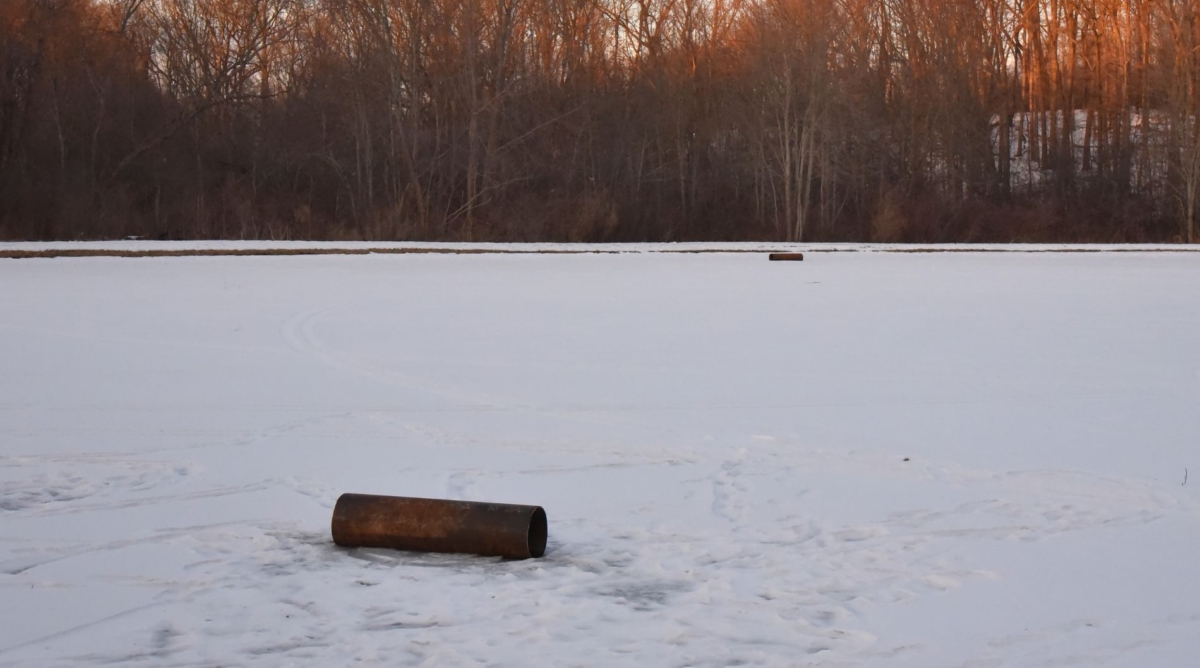Part of our mission at Summit Metro Parks is to sustainably manage the resources in our park district. This includes natural resources, like native plants and rivers, and manmade materials, such as steel pipes.
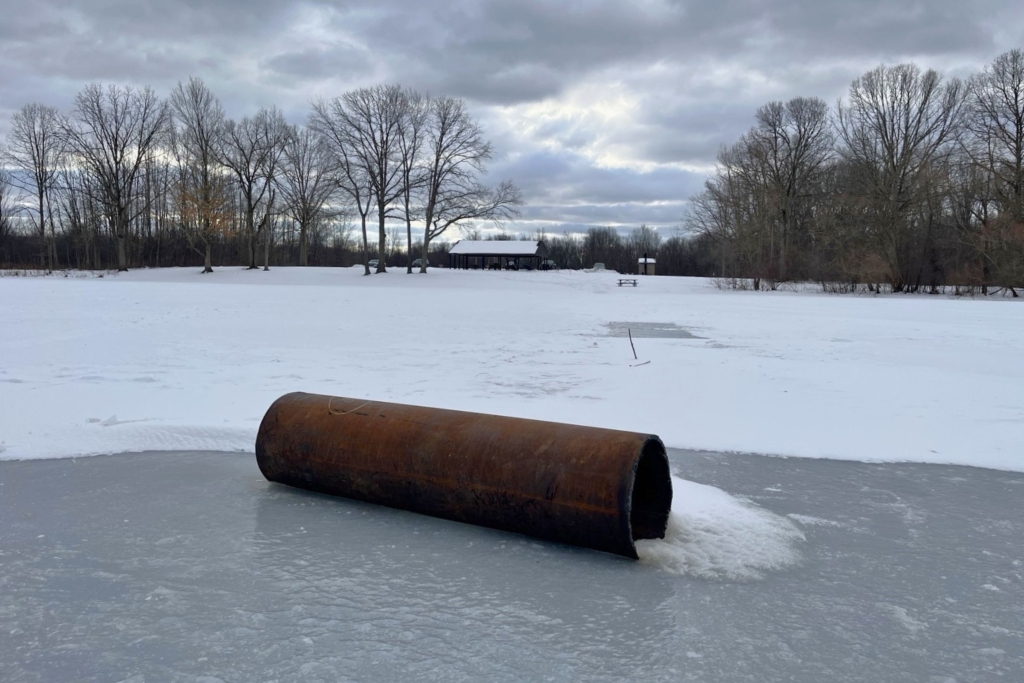
The park district’s departments work together to ensure we’re effectively and efficiently managing resources. For example, a recent program that involved building mason bee houses used leftover wood from a boardwalk project at Pond Brook Conservation Area, PVC pipes from a project at F.A. Seiberling Nature Realm, nails from a different naturalist-led program and Japanese knotweed – an invasive plant species – from a Metro Park.
Recently, as part of construction for the Middlebury Connector Trail – which will connect Freedom Trail to Portage County’s Hike & Bike Trail – steel pipes 14 inches in diameter were driven into the ground to help support the bridge foundations.
Despite planning and multiple calculations, the pipe piles reached the required bearing strength much quicker than anticipated in the hard subgrade soils. This left the planning and development department with four 20-foot long pieces of unused steel pipe. Instead of scrapping the material, our teams fished for a different solution.
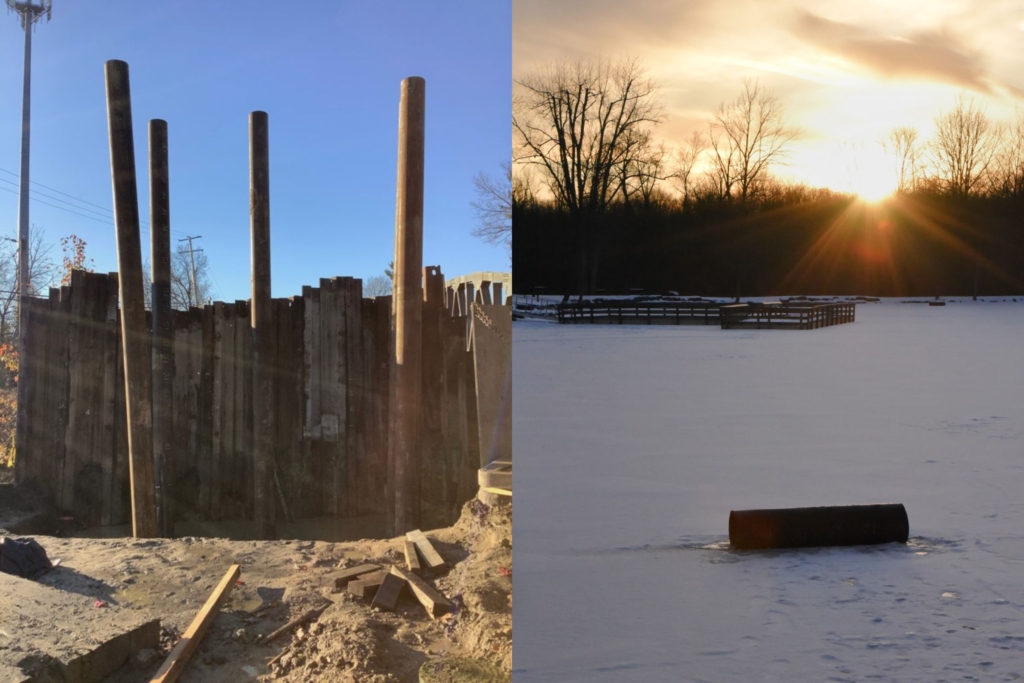
Enhancing habitats and park experiences
The solution? Fish habitats. Adding 5-foot sections of the pipes to ponds across our Metro Parks will help enhance the habitat for native fish and other aquatic species. This will improve the health and productivity of the entire ecosystem.
Benefit 1: Safe havens for fish
Fish structures provide crucial hiding spots for fish, helping them avoid predators and find shelter from harsh weather. This increases the chances of survival of our fish.
We occasionally add recycled Christmas trees to our ponds for a similar purpose. This year, we tied trees to a few of the pipes to help the trees stay submerged.
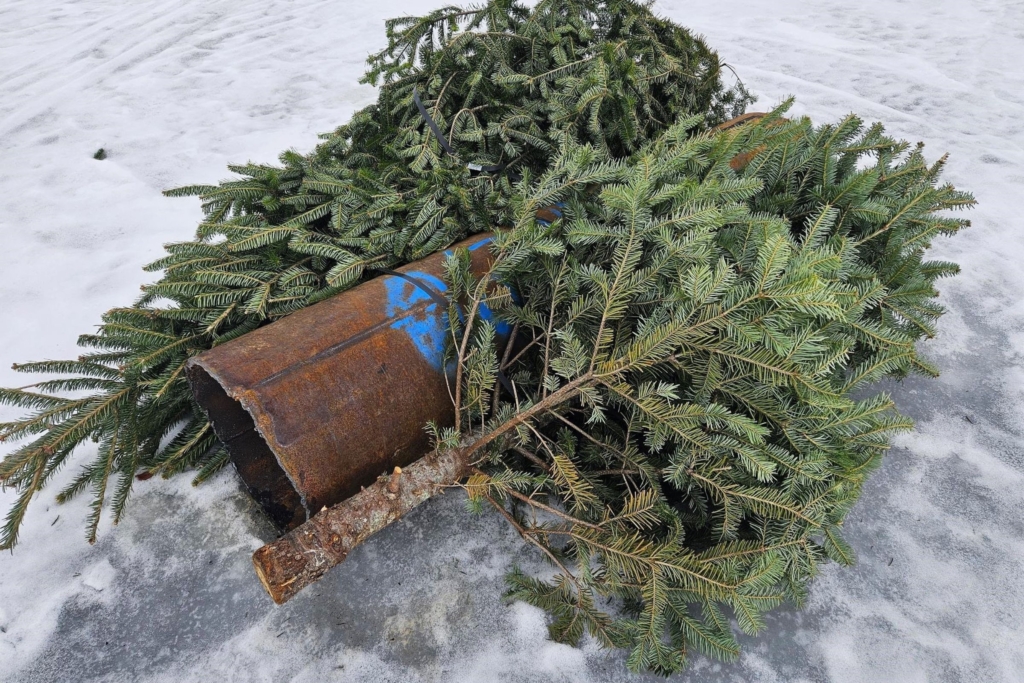
Benefit 2: aquatic plant growth
Artificial pond structures, like submerged pipes and trees, provide varied substrates for plant growth. Different plant species thrive on different types of surfaces and at various depths. By mimicking natural features, the pipes provide microhabitats that encourage and support a wider diversity of native aquatic plants.
In turn, these aquatic plants supply oxygen, food and more shelter for fish and other aquatic flora and fauna, keeping our ponds balanced and thriving.
Benefit 3: Boosting fish populations
By offering suitable habitat, these structures can help increase both the population of fish and the survival rate of young fish. A healthy population of native fish leads to a more active and diverse aquatic environment.
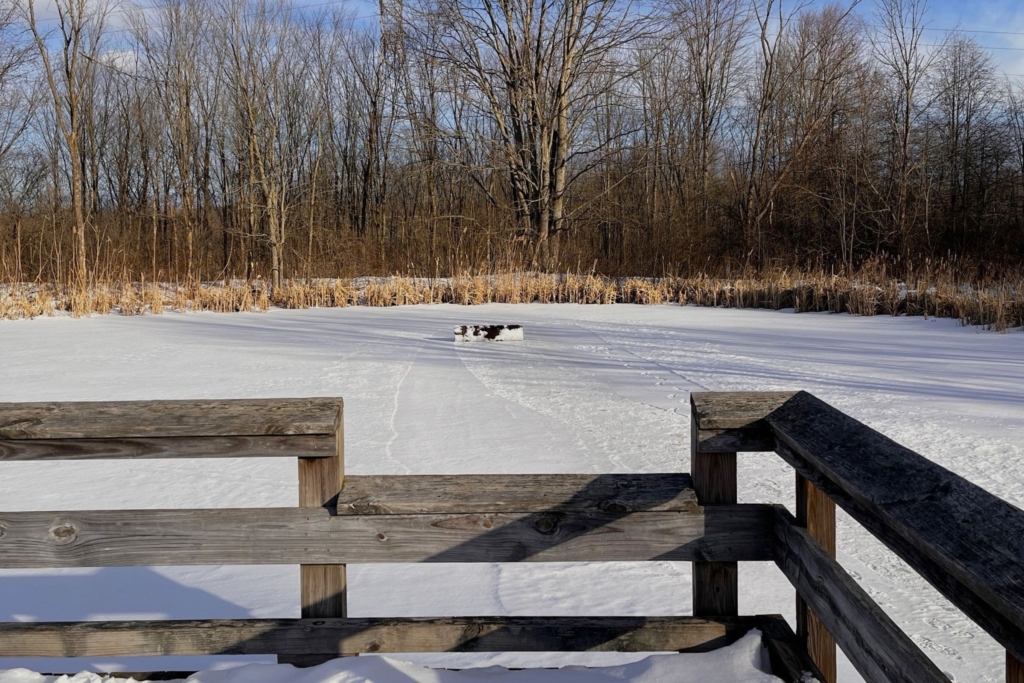
Benefit 4: Enhancing your fishing experience
These fish structures also make fishing more enjoyable and successful. Because the pipes create ideal habitats for fish, it boosts your chances of catching a variety of native species.
Implementing on ice
Sometimes unique solutions require creative ideas for implementation. Each 5-foot piece of steel pipe weighs about 300 pounds. We could have placed each piece using a boat in the summer. Instead, we took advantage of the winter elements.
This winter, the ground was frozen, lake levels were down and thick ice formed on lakes. This allowed our crews to easily transport the pipes to each body of water and drag them across the ice with a sled – or simply roll them into place. Once the water melts, the pipes will sink, and the fish can start calling their interior designers – or whatever fish do with a new habitat.
Twenty pieces of pipe were placed across six parks: Firestone Metro Park, Furnace Run Metro Park, Liberty Park, Munroe Falls Metro Park, Silver Creek Metro Park and Wood Hollow Metro Park. So, if you see one during a winter hike, enjoy our one-of-a-kind “modern art” before it sinks and begins its next functional journey.
Sustainability efforts range from simple to complicated. The process involves teamwork, brainstorming, planning, implementation and more. But in the end, every decision is made to prioritize a sustainable future for us all.

